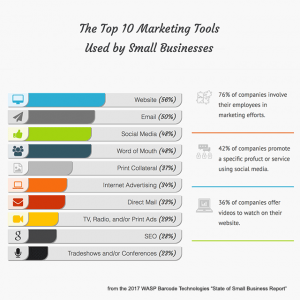— February 26, 2018

It has been an open secret (in marketing circles at least) that Google has been using mobile usability as a ranking factor for some time. And they have hinted at that becoming an even larger factor going forward.
Now, there is no published guide, nor will there ever be, that tells marketers how Google ranks websites. But one thing is very clear, in a mobile world, mobile rankings matter. Google knows this, and if your company is late to creating a great mobile experience for your visitors, you are about to see your traffic tank.
Pretty soon, without a mobile-friendly website, customers won’t be able to find you. They will search on Google (by typing or speaking) and a whole bunch of your competitors will show up. But you won’t.
Your website may continue to get traffic from people coming there directly, or from desktop searches. But those are becoming a smaller and smaller piece of the pie. And pretty soon your traffic will fall to zero.
What Matters on Mobile
Mobile usability depends on three things:
- Speed. Speed always matters online. But it matters even more for mobile. When customers are on their phone, they want things fast. The longer your website takes to load, the more annoyed they get, and the more likely they get to hit the BACK button. Google doesn’t want them to do that. So the more people that do that, the lower your ranking will get.
- Navigation. The way your customers move around your website on a phone is different than on a desktop. Instead of links, they need buttons. Instead of nav bars, they need menus. If a user can’t find their way from point A to point B, they will get frustrated. The sooner they do, the more likely they are to leave your website. Google doesn’t want that, and you’re going to get punished for it.
- Readability. Content that does not resize to a user’s screen is often difficult to read or interact with. Too much clutter or tiny type size are two of the most painful mobile usability issues that still happen on many websites. But again, these issues will lead to unhappy users. And Google can’t abide unhappy users.
In Conclusion
If your website is not mobile-friendly, the time to change that is now. Even if it is, you can do better. And you have to do better, because the mobile-first ranking algorithm is coming for your customers.
Digital & Social Articles on Business 2 Community
(79)
Report Post

